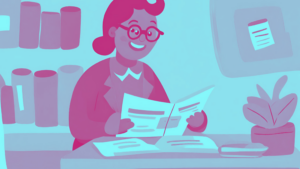Every week, I write a post based on ClassDojo’s regular Twitter chat on Wednesday evenings. This week the moderator was Nigel Lane (@NL_84) and the topic was Collaborative Learning.
Q1. Tell us what collaborative learning means to you. Is it just a fancy word for group work?
Simply put, collaborative learning means learning together, in my opinion. This can be done in so many ways and suits lots of different traditional methodologies. Group work is only one part of this. A whole class can collaborate on a project together, which may or may not include the teacher as a learner. Another option of collaborative learning is not to restrict it to the walls of a classroom. Different classes can work together, and because of the power of technology, different schools, no matter where they are in the world, can also collaborate.
Q2. What prerequisites are needed at classroom/school/district level to aid effective CL?
Good planning is first and foremost. Providing roles to all players in the learning experience is an obvious one too. Giving the learners space to problem solve and come up with ideas is also important. If collaborating with others in different schools, adequate broadband is a must. Finally, and probably most importantly, is the teacher with an open mind and the ability to facilitate collaborative learning experiences.
Q3. How do you manage collaborative learning in your classroom? e.g. frequency of CL, group numbers
I’ve been out of the classroom for a while but remember spending a large proportion of my day on collaborative learning. Today I see it in action in Aistear where young infants are working together to solve all sorts of problems with wooden blocks, cardboard boxes and buckets of sand and water. There is a tendency for some teachers, in general, to fear the loss of control with collaborative learning but once it’s tried, it’s hard to go back to traditional values.
Q4. How do you ensure that all students are on task during CL sessions?
This is probably one of the most difficult things for a teacher to achieve. It’s certainly not for the teacher who likes sitting behind their desk. My first bit of advice is to either push your desk to the wall or get rid of it altogether. I have to say, this decision was probably the best one I ever made. It forced me to ensure I was among the children and their learning and gave me a whole load of extra space in my classroom! Ultimately, it’s the teacher’s job to ensure that everyone is on task to their ability so catching children being on task and rewarding them with dojo points is one method. Differentiating expectations and jobs is another important tactic too.
Q5. Does CL lend itself to any particular subjects or can it be used extensively? Any good examples of its use?
It can be used extensively in all subjects. The only limit is the imagination. Aistear is the best example of collaborative learning in most schools today. The challenge is to keep this up as the children get older – and why not? The more independent children become the more they can do collaboratively.
Q6. Are there any resources (online or other) that are useful when planning or engaging in CL?
Any brainstorming or mind mapping resources are great for this. Padlet is lovely and so is bubbl.us. Other things like Google’s office suite are great for collaboration and well worth trying out.
Q7. It’s ultimately all about the students, so do we know how they feel about CL?
Great question. It would be silly to insist they all love collaborative learning as there are still expectations about what school “should” be in the heads of our pupils so anything away from that traditional mindset is hard to change. Some would argue that children with an intrapersonal learning style might not suit collaborative learning and that’s fair enough. I think the teacher should be able to assess all their pupils’ learning styles and adapt their teaching to embrace a mix of learning styles whatever they might be, and more often than not, all at the same time.

